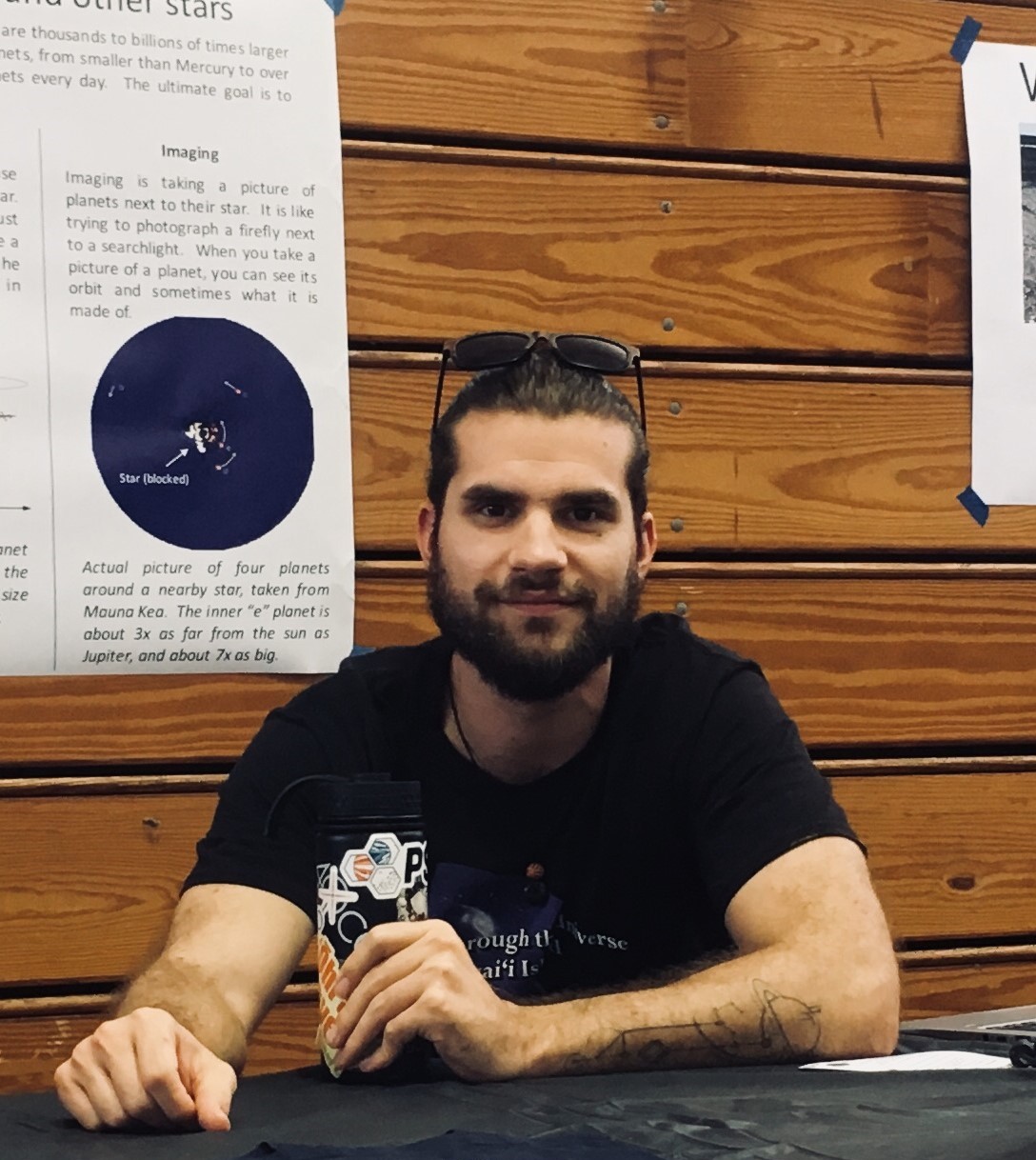
Subaru Telescope
Laboratory of Space Studies and Instrumentation in Astrophysics -- Astrobiology Center of Japan
United States of America
Contact:
Email
Personal Website
ORCID
Research Gate
Sebastien Vievard
Post-Doctoral Researcher
Exoplanet Instrumentation Postdoctoral Fellow
High Contrast Imaging -- Interferometry -- Fibres -- Astrophotonics -- Spectroscopy
Current Research Summary:
The main subject of my research is developing and improving instruments for high-contrast imaging.
The aim of the instruments I work on is to detect and characterize exoplanets or binary systems. The
different instruments I work on are:
FIRST: Stands for Fibered Imaging foR a Single Telescope. This instrument combines different techniques
for high contrast imaging: multi-aperture masking, pupil remapping and space filtering thanks to single-mode
fibers. Coupled with a spectrograph, the FIRST instrument allows to detect and characterize binary systems
(ultimately, exoplanets) below the diffraction limit of a telescope. I am in charge of the instrument
operation on the telescope, I also work on the data reduction pipeline and on new upgrades to make the
instrument even more efficient.
IRD: Stands for InfraRed Doppler spectroscopy. This instrument is a high resolution spectrograph used to
detect exoplanets thanks to the radial velocity technique. We are currently working on combing the SCExAO
instrument and IRD in order to perform a post-coronographic injection of an exoplanet light in a single-mode
fiber linked to the IRD spectrograph. I am helping in IRD operation and maintenance, and in the coupling between
IRD and SCExAO. I also intend to work on IRD data to study spectra of stars or even maybe exoplanets.
SCExAO: Stands for Subaru Coronographic Extreme Adaptive Optics. This instrument located on the Subaru telescope
was originally designed to be a coronograph linked with an extreme adaptive optic system for exoplanet detection.
Over the years it became a platform to study/develop/test new instrument concepts and algorithms. Two modules are
currently used for science: CHARIS, an Integral Field Spectrograph used for exoplanet detection and characterization,
and VAMPIRES, a differential polarization imager for circumstellar environments. The module FIRST is also on SCExAO,
and IRD will also be very soon. On this complex platform I help with operation and maintenance, and I also test
different algorithms to correct for the Low Wind Effect.
Prior Research:
During my PhD I worked at ONERA in France. The aim of my PhD was to develop easy-to-implement new algorithms for the alignment and co-phasing of multi-aperture instruments in the context of space-based telescopes. I worked on two focal plane wavefront sensors that allow to correct for Large amplitude errors on the sub-apertures and small amplitude residual co-phasing errors. This work led to numerical and experimental validation of both algorithms on a testbed in ONERA. After my PhD and until now (when I have time, between 2am and 4am), I started a collaboration with the Space Telescope Science Institute (in Baltimore) to test my algorithms on a testbed designed to test alignment/cophasing techniques for the James Webb Space Telescope. I offer to help implement my algorithm to any institution/people that would need an easy solution for cophasing multi-aperture imagers.
